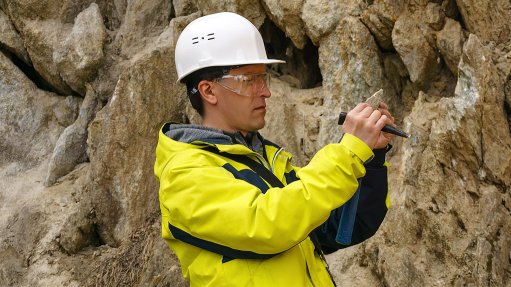
EXPLORING THE OPTIONS The lack of exploration projects could dent south Africa's mining sector in ten to 20 years.
Of the more than 1 000 prospecting rights granted in 2019 and 2020, virtually none awarded to emerging mining companies progressed beyond the application and approval process, says mining employers’ organisation Minerals Council South Africa junior and emerging miners desk lead Grant Mitchell.
He attributes the lack of realisation to an ineffective selection process and uncertainty in the exploration sector.
“In general, prospecting rights would be granted based on a first come, first served basis, with due diligence being conducted on whether the applicant has the capacity and funding to progress the project to the development stage.”
The entire exploration, discovery, development and production stages could take up to 20 years before a mining operation can start production, Mitchell adds.
“Given the lack of current exploration projects in South Africa, this does not bode well for South Africa’s mining sector over the next ten to 20 years.”
However, he points out the Minerals Council continues to engage with government and key stakeholders to help develop the junior mining sector through various initiatives it is spearheading.
One such initiative, which was highlighted in the Exploration Implementation Plan released by the Department of Mineral Resources and Energy in May 2022, includes the development of a commercially available and tested mining cadastral system.
A cadastral system is a comprehensive recording of the defined ‘metes and bounds’ of a country’s real estate or properties, including the locations of possible mineral deposits, mineral distributions and mineral tenements.
Therefore, an online mining cadastral system is an important means of gaining or regaining investor confidence and, consequently, promoting mineral exploration
“Having the information on hand, which is up-to-date and correctly captured, will streamline the exploration process greatly,” he says.
Support Structure
Mitchell says the Minerals Council has introduced a capacity-building mentorship programme, which enables junior miners to benefit from the experience of larger global mining houses for advice, suggestions and legal assistance.
“The mentorship programme, implemented in August, currently has five major mining houses who are Minerals Council members, offering senior executives as mentors for the junior miners.”
Further programmes include the Junior Mining Accelerator Programme, which will assist juniors with finance-related challenges and help them list on the JSE.
This is a joint initiative between the Minerals Council and the JSE, which aims to provide support in the areas of planning, raising finance and developing longer term strategies for junior mining companies.
“The process of listing is tedious and often confusing, with many legalities and financial implications,” says Mitchell, who adds that the opportunity to list on the JSE “obviously brings with it great investment advantages”.
The Minerals Council has also approached National Treasury with a detailed proposal for tax incentives, using the successful “flow through share” model applied widely in Canada.
“We have used the existing tax incentive structure as a basis and tweaked it to better suit the junior miners of South Africa,” says Mitchell.
Further, research indicates that South African junior miners see themselves as progressing from exploration/development towards progressing the project to fruition.
“Their goal is to become producing companies,” he says.
He concludes that with the advancement of green technologies and minerology, emerging junior miners often add a fresh outlook to mining that must be developed and nourished through investment and regulatory certainty.